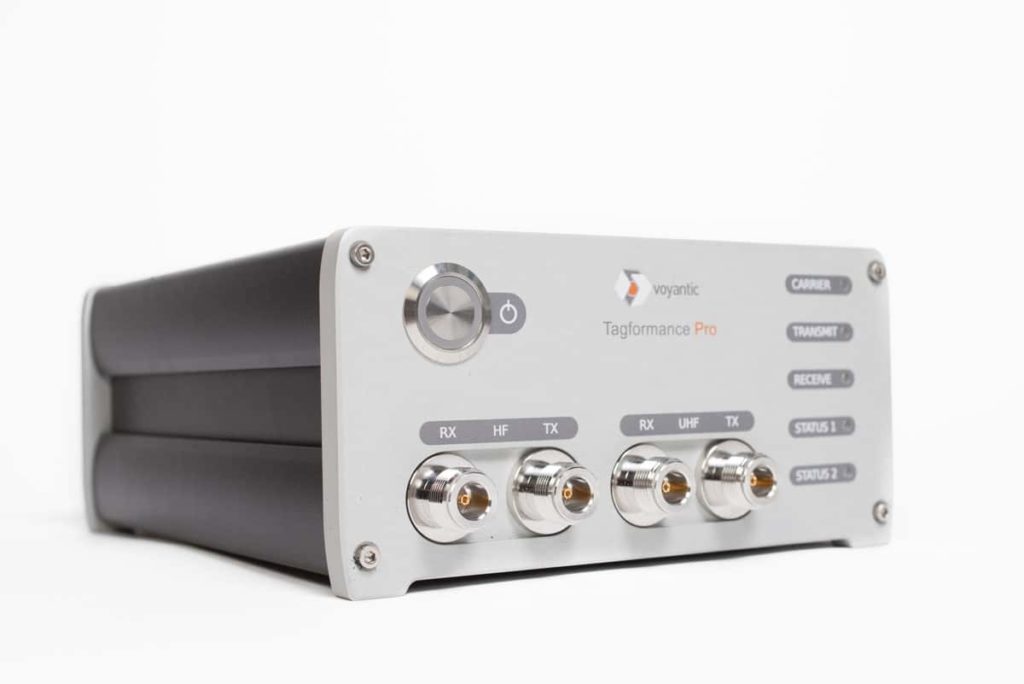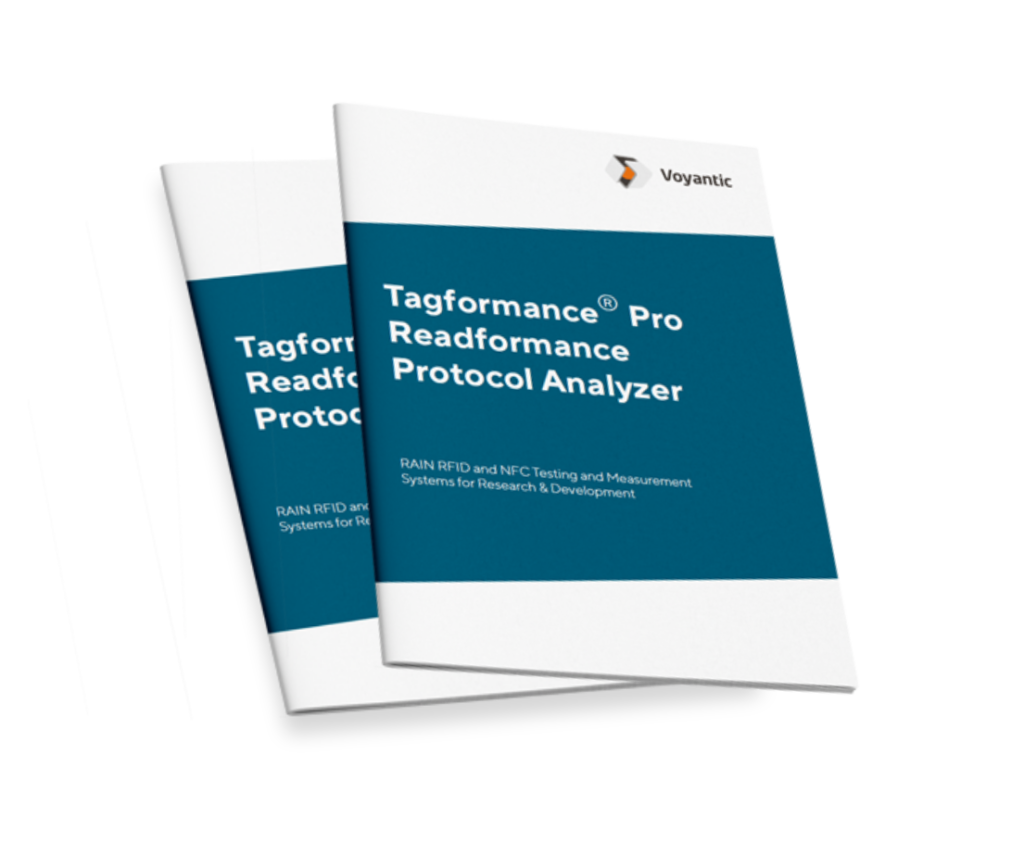There are applications, where fast data collection and high read distances of RAIN RFID (UHF) tags fulfill the overall application requirements only partially. Especially the missing capability of a consumer to easily access the tag contents limits the usability for marketing, product information and authentication purposes. A NFC tag would remove that limitation but also induce additional costs and complexity to the label finishing stages: double encoding and possible data compliance verification between these two tags. Interestingly the first IC chip with both high frequency (HF) and ultra-high frequency (UHF) communication interface was launched in 2015 by EM Microelectronics. In this text I will take a closer look at the quality aspects of dual interface tags: How do you verify that each tag produced meets its specification?
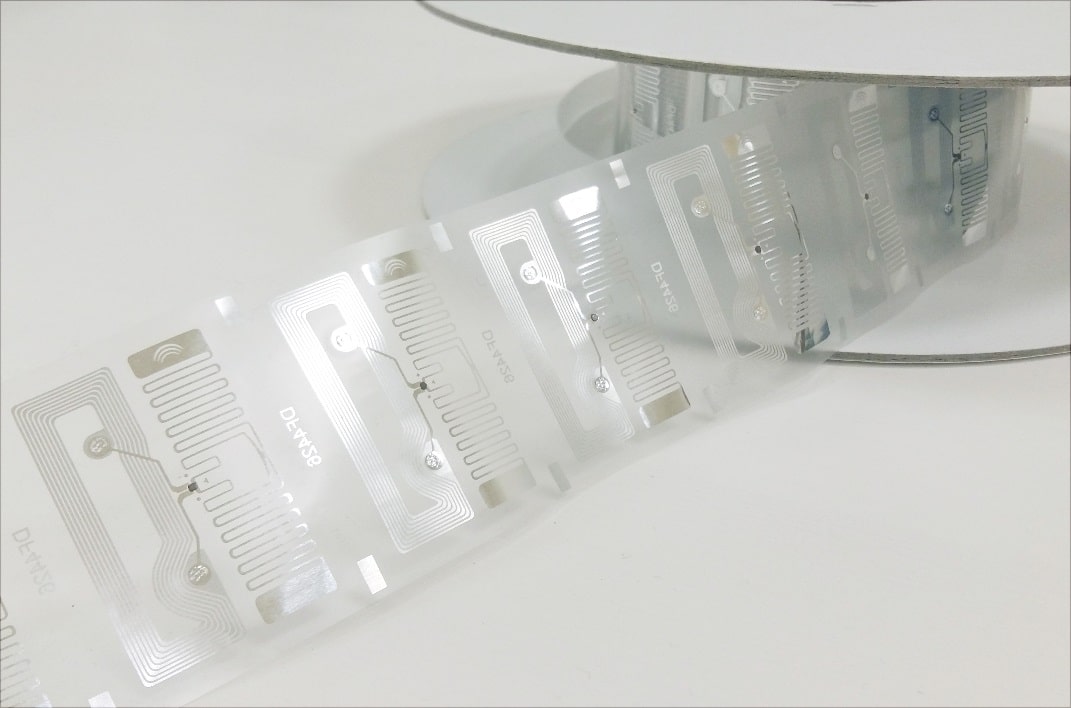
Is It Sufficient to Test the Performance of Either Interface to Guarantee the Performance of the Tag?
Let’s dig into the tag structure a bit to understand more detailed where the performance comes from. The chip itself is one complete entity with two interfaces for each frequency. This allows conveniently accessing the memory locations of the chip through either HF/NFC interface using for example your mobile phone, or through UHF interface by for example the retail in-store inventory system. On the inlay level there are still two separate antennas; one that is used for HF coupling and the other for UHF field communication. Both of these antenna structures are connected to the IC through separate chip I/Os. Below we can see an example of such a tag design from Lab ID:
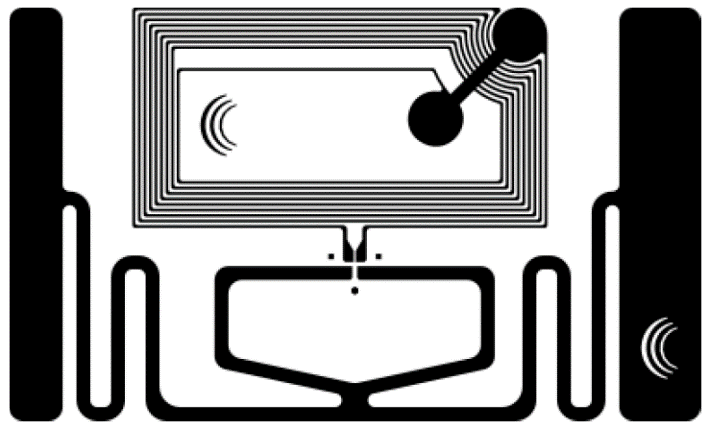
There is certainly some coherence in the process quality for both interfaces, as the antennas are both processed simultaneously, and a single chip is assembled to work with both, but is it enough to guarantee the good performance for both if only one interface is tested? Based on some further analysis on possible failure mechanisms, the answer to the question is
No, it is not!
NFC and RAIN Performance on a Dual Interface Label Needs to be Separately Tested
We ran some tests using both Tagsurance UHF and Tagsurance HF testers to identify less sensitive tags from a roll of dual frequency tag samples. The test setup for testing dual frequency tags consists of two separate Snoop Pro coupling elements – one for UHF testing and one for HF testing – and a Tagsurance unit connected to each of them.
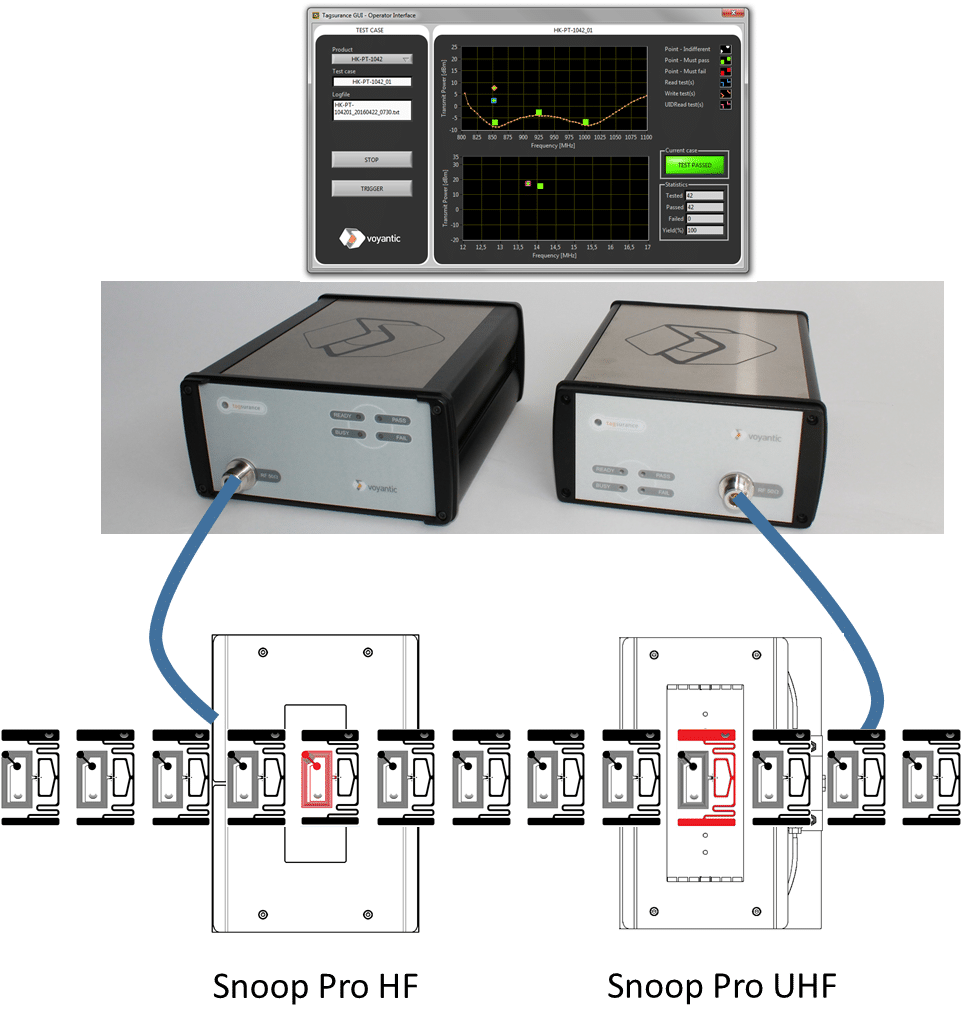
One graphical user interface handles both testing units and gathers the test results and read data from each tag in a combined log file. Based on this information we were able to identify tags with lower performance either on UHF communication or in HF communication. In many failed samples the performance had decreased in both interfaces. In the graphs below we can see the UHF performance on upper graph and the HF performance on lower graph for a normal tag (white curve) and for a tag with decreased performance (red).


This is not always the case though, as we could also identify tags where one interface was performing good, but the other one was either not functional at all, or the performance was just significantly lower compared to normal level of variation in the sample set. In the graphs below there’s the UHF performance and the HF performance of four tags; one normal (white curve), one with decreased UHF performance and normal HF performance (blue) and one with decreased HF performance and normal UHF performance (green). There you can also find one tag with decreased UHF performance and HF performance slightly better than the typical tag (orange).


NFC/RAIN RFID Combo Test Solution Is Available
As always with disruptive new technology, it takes some time for the components and new manufacturing technologies to fully mature. As this brief study shows, the performance of either interface can vary independently of each other, even if they are integrated on the same IC. Therefore both interfaces should be tested in production.
Voyantic provides turn-key solutions for testing of all your RFID production. With our equipment you can test your RAIN RFD tag; HF/NFC tags with ISO 15693, ISO 14443A, ISO 14443B, Felica and ISO 18000 3M3 protocol; and dual frequency tags. We would be happy to tell you more and tailor the best suited solution for your exact requirements!
Download our new Application Note about testing of UHF, HF/NFC and dual frequency tags, giving a detailed understanding on the equipment and test setup used in production. Contact us to learn more!
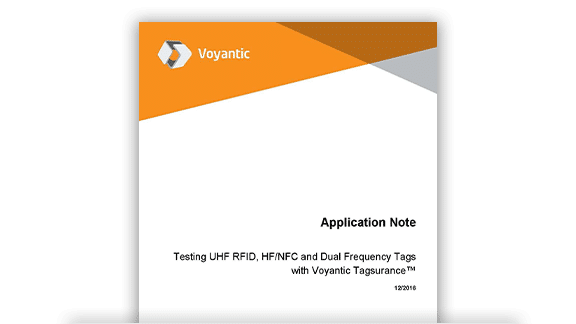
Learn How to Test Dual Frequency Tags
Download our application note to learn how to get things right the first time when testing UHF RFID, HF/NFC and dual frequency tags!


